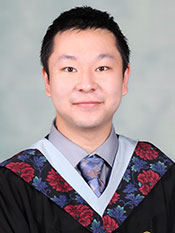Program Information
A Feasibility Study Evaluating Automatic Identification of Gross Tumor Volume for Breast Cancer Radiotherapy Using Dynamic Contrast-Enhanced MR Imaging
C Wang*, J Horton , F Yin , R Blitzblau , M Palta , Z Chang , Duke University Medical Center, Durham, NC
Presentations
SU-E-J-182 Sunday 3:00PM - 6:00PM Room: Exhibit HallPurpose:To develop a computerized pharmacokinetic model-free Gross Tumor Volume (GTV) segmentation method based on dynamic contrast-enhanced MRI (DCE-MRI) data that can improve physician GTV contouring efficiency.
Methods:12 patients with biopsy-proven early stage breast cancer with post-contrast enhanced DCE-MRI images were analyzed in this study. A fuzzy c-means (FCM) clustering-based method was applied to segment 3D GTV from pre-operative DCE-MRI data. A region of interest (ROI) is selected by a clinician/physicist, and the normalized signal evolution curves were calculated by dividing the signal intensity enhancement value at each voxel by the pre-contrast signal intensity value at the corresponding voxel. Three semi-quantitative metrics were analyzed based on normalized signal evolution curves: initial Area Under signal evolution Curve (iAUC), Immediate Enhancement Ratio (IER), and Variance of Enhancement Slope (VES). The FCM algorithm wass applied to partition ROI voxels into GTV voxels and non-GTV voxels by using three analyzed metrics. The partition map for the smaller cluster is then generated and binarized with an automatically calculated threshold. To reduce spurious structures resulting from background, a labeling operation was performed to keep the largest three-dimensional connected component as the identified target. Basic morphological operations including hole-filling and spur removal were useutilized to improve the target smoothness. Each segmented GTV was compared to that drawn by experienced radiation oncologists. An agreement index was proposed to quantify the overlap between the GTVs identified using two approaches and a thershold value of 0.4 is regarded as acceptable.
Results:The GTVs identified by the proposed method were overlapped with the ones drawn by radiation oncologists in all cases, and in 10 out of 12 cases, the agreement indices were above the threshold of 0.4.
Conclusion:The proposed automatic segmentation method was shown to be promising and might be used to improve physician contouring efficiency.
Funding Support, Disclosures, and Conflict of Interest: J Horton receives grant from NIH and Varian Medical Systems; F-F Yin receives grant from Varian Medical Systems
Contact Email:


